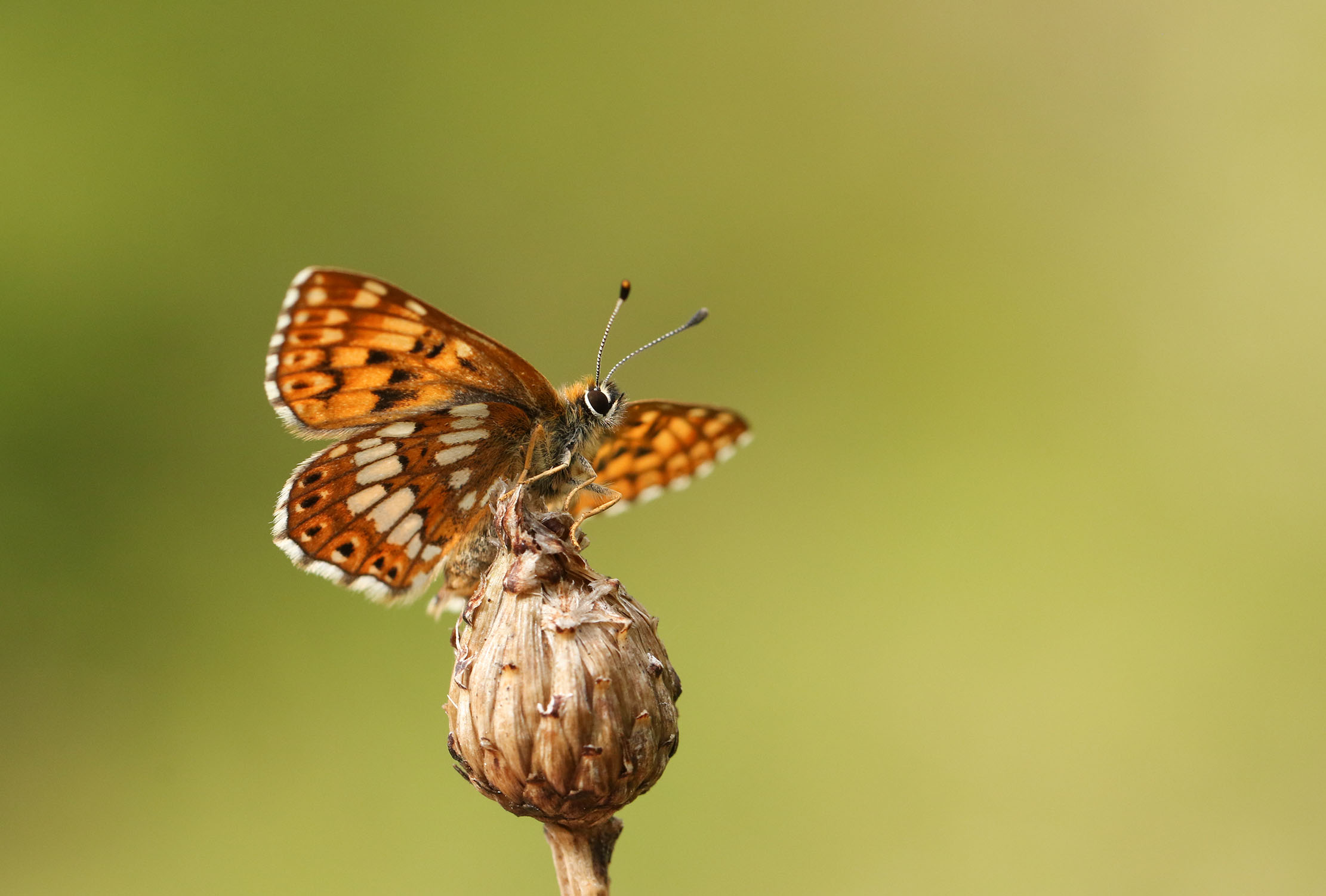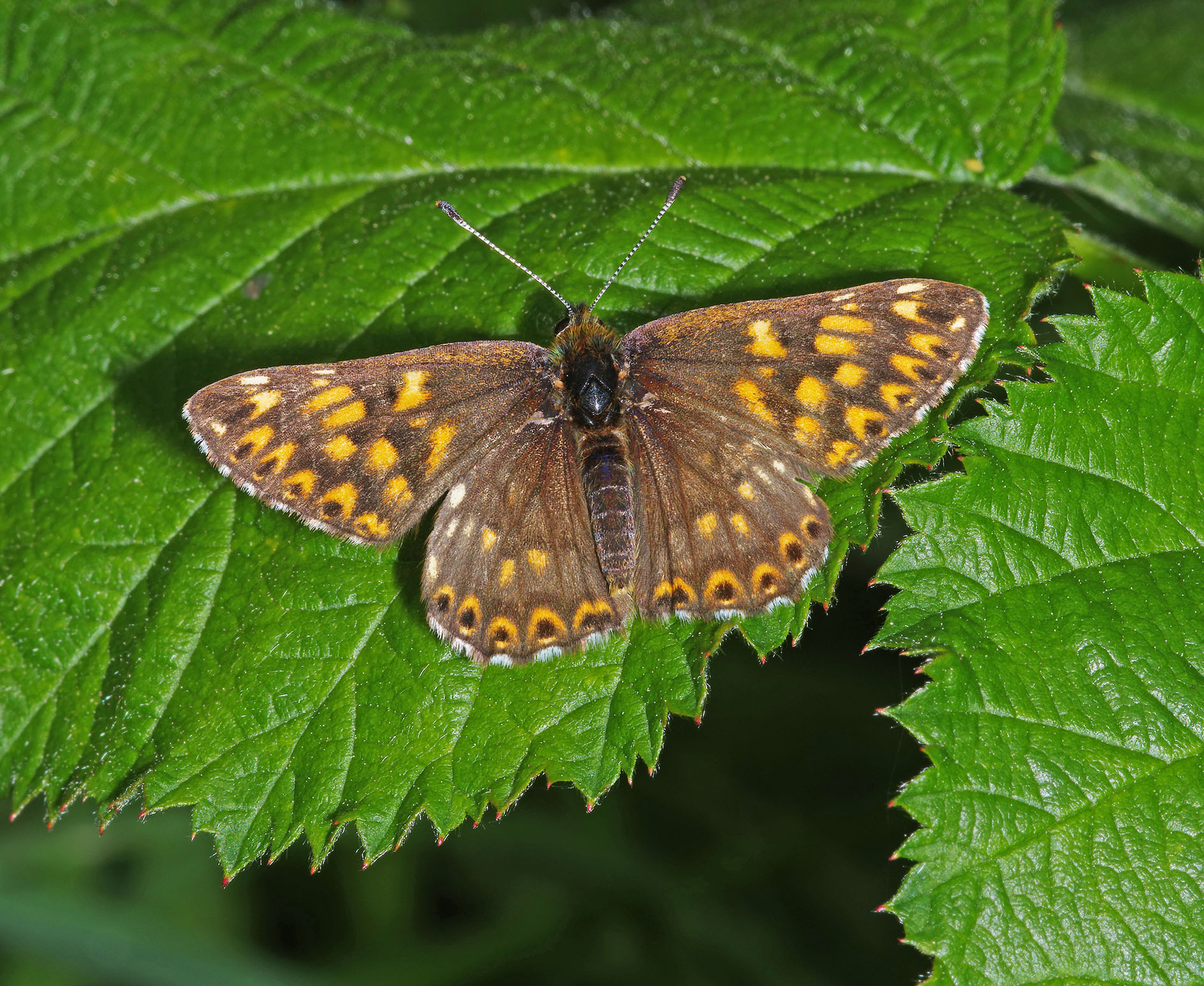Duke of Burgundy butterfly discovered in brand new colony, and it's the biggest in the country
There is good news for the vanishingly rare Duke of Burgundy butterfly, as a new colony has been discovered. Annunciata Elwes reports.


The population of the threatened, orange-and-brown Duke of Burgundy butterfly has received a boost from the discovery of a new colony in Dorset farmland, attributed to a farmer’s efforts to improve biodiversity.
Dr Martin Warren of Butterfly Conservation was strolling during lockdown on a path through a 60-acre chalk downland hill, part of John Hiscock’s organic dairy farm, when he happened upon what could be the largest Duke of Burgundy colony in the UK. The species is down 84% since the 1970s and, now, most colonies are in central southern England, with a few in the North.
Mr Hiscock — who supplies the Duchy brand at Waitrose, which insists its UK dairy farmers devote 10% of their land to biodiversity and habitat management — recently benefited from Defra’s Countryside Stewardship scheme, allowing him to reintroduce cattle. The Dukes were found in banks rich in cowslips (excellent caterpillar foodstuff) that, without grazing, would have been covered in long grasses.
‘We have farmed organically for more than 20 years, with no pesticides, sprays or chemical fertilisers, allowing the wildlife habitat to improve and these rare butterflies to thrive, together with many other species,’ says Mr Hiscock.
About the Duke of Burgundy butterfly

The rarity of the butterfly has made it elusive, even to keen butterfly spotters. Naturalist and author John Wright included it in his list of a dozen most beautiful butterflies in Britain, writing in Country Life a couple of years ago, yet even he has spotted one himself: 'The sombre blacks and Fabergé intricacies of this rare species make it a must-see butterfly, although I fear I never will,' he wrote.
Officially named Hamearis lucina, it is a small creature with a wingspan of just over an inch (typically 29-32mm). They're a breed that lives in scrubby grassland and woodland clearings, very rarely visiting flowers. Males are most often spotted, perching on leaves; the females, according to Butterfly Conservation, 'are elusive and spend much of their time resting or flying close to the ground.'

12 of Britain's most beautiful butterflies – and the truth about their chances of survival
Beautiful, delicate and harmful to no-one, our iconic butterflies are facing an increasingly perilous existence – that's the conclusion reached
Exquisite houses, the beauty of Nature, and how to get the most from your life, straight to your inbox.

Credit: setouchitrip.com
Bucket List Inspiration: The most beautiful gardens from all over the world
11 of the world's most stunning must-visit gardens, from vineyards in America to shrunken miniatures in Japan.
Annunciata is director of contemporary art gallery TIN MAN ART and an award-winning journalist specialising in art, culture and property. Previously, she was Country Life’s News & Property Editor. Before that, she worked at The Sunday Times Travel Magazine, researched for a historical biographer and co-founded a literary, art and music festival in Oxfordshire. Lancashire-born, she lives in Hampshire with a husband, two daughters and a mischievous pug.
-
 18 country houses across Britain, from £400,000 to £4 million, as seen in Country Life
18 country houses across Britain, from £400,000 to £4 million, as seen in Country LifeOur look at the homes to come to the market via Country Life this week picks out a charming Kent cottage and an Arts and Crafts house in Leicestershire.
-
 The greatest flowers make the greatest art
The greatest flowers make the greatest artA search for still-life subjects led Kate Friend to some of the greatest gardens and gardeners in the country
